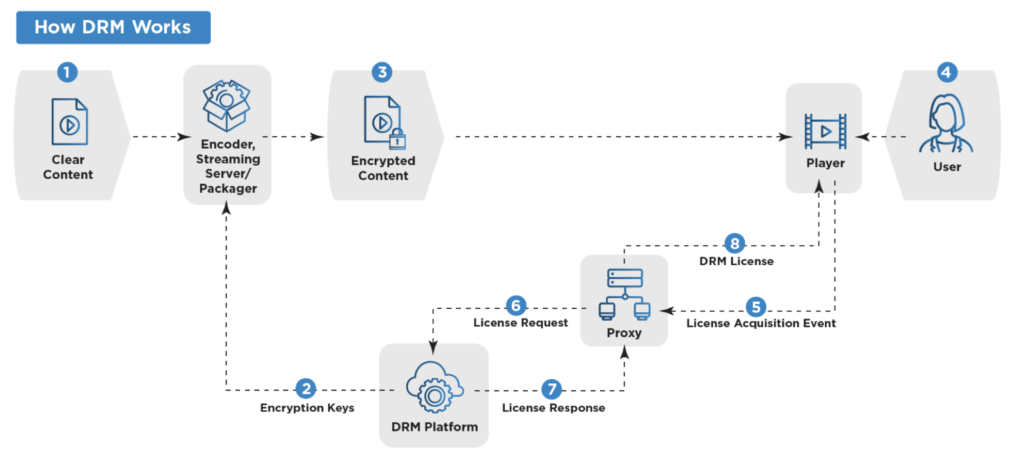M+E Daily

BuyDRM White Paper Details Gaps In Content Protection Strategy
Story Highlights
As digital rights management (DRM) technologies have matured, it follows that so too would their capabilities. However, as the technological landscape has become more fragmented, the lack of a centralised platform to “lockdown” simply creates opportunity zones for pirates.
That’s the dilemma posed by content protection specialists BuyDRM and their new white paper https://go.buydrm.com/is-drm-flawed “Is DRM Flawed? Closing the Gaps in Your Content Protection Strategy,” which explores some of the past flaws in DRM, how the current approach to DRM might be flawed, and how improvements in DRM technology combined with watermarking can help close the gaps in content protection strategies.
“We have all heard the mantra ‘every screen and every device’ — it’s a rallying cry for marketers in almost every segment of the video industry, but some of those screens and devices are much more secure than others,” the report reads.
 From the 1999 Microsoft release of Windows Media Rights Manager, the predecessor to PlayReady, to present-day DRM technologies, the white paper examines the history of DRM, and why it has evolved the way it has, with new tech a necessity in order to create successful content distribution strategies.
From the 1999 Microsoft release of Windows Media Rights Manager, the predecessor to PlayReady, to present-day DRM technologies, the white paper examines the history of DRM, and why it has evolved the way it has, with new tech a necessity in order to create successful content distribution strategies.
“Since security, in any form — whether it be securing your home, your car, or a vault, depends on controlling ingress and egress points — the decades old problem of protecting streaming media from piracy has become exponentially more problematic,” the report reads. “The central problem as it relates to streaming media is that OEMs don’t want to share their secret sauce nor their sandbox with competitors. Could you imagine someone asking Coca Cola to share their recipe with Pepsi?”
The result, as it relates to OTT streaming, is that the most effective way to control ingress and egress points is to keep the user in an app or on the same browser as the operating system that is native to the machine they are using to access the content. This results in a less than desirable user experience and severely limits the reach of your distribution.
While much more complex, protecting content with DRM can be broken into two major parts – encryption – locking the content, and decryption – unlocking the content. While encryption is handled differently amongst the different DRM OEM’s, the basic concept is the same. The problem of piracy has little to do with how content is encrypted but everything to do with how it is decrypted.
To access the full white paper, click here.









